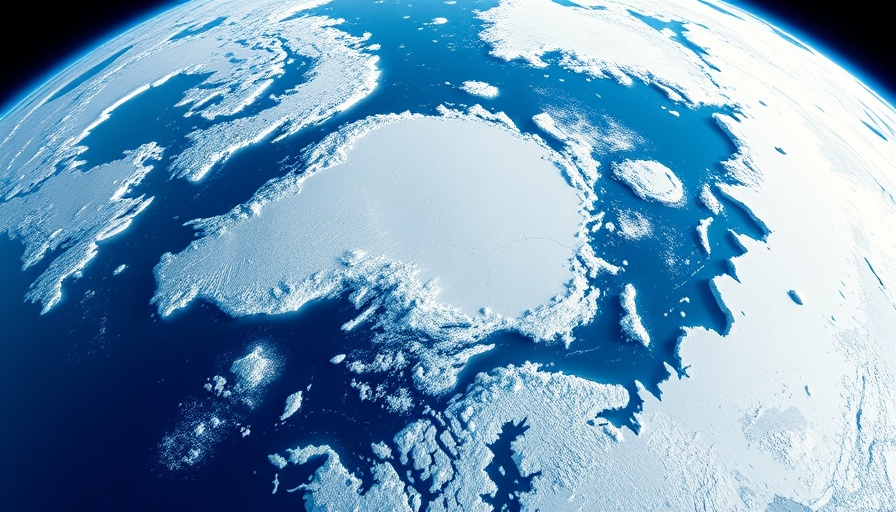
Arctic Sea Ice Hits Record Low: An Environmental Wake-Up Call
The rapid decline of Arctic sea ice is now underscored by an alarming statistic: the maximum extent reached just 5.53 million square miles on March 22, 2025. This measurement marks the lowest level in nearly five decades of satellite monitoring, beating the previous record set in March 2017. Walt Meier, a senior research scientist at the National Snow and Ice Data Center (NSIDC), sheds light on the broader implications of this record-breaking level. "This new record low is yet another indicator of how Arctic sea ice has fundamentally changed from earlier decades," Meier stated.
Understanding the Impact of Drying Ice Caps
The reported figures from NSIDC reflect a worrying trend: this year’s sea ice extent is 510,000 square miles below the average from 1981 to 2010. This reduction isn't just a statistic; it translates to drastic changes in the Arctic's ecosystem and worldwide weather patterns. Climate change, specifically rising temperatures, is now linked to these sea ice losses, as emphasized by researchers across the globe.
The Ripple Effects: Arctic Ice and Global Weather
Interestingly, while the Arctic battles shrinking ice coverage, Antarctica is also feeling the heat. The Antarctic sea ice reached a near-record low of 764,000 square miles on March 1, tying for the second-lowest extent measured. The total loss of ice signifies a critical ecological shift with the potential to alter weather systems worldwide. Julienne Stroeve from the University of Manitoba elaborates, "The warming winter atmosphere above the Arctic Circle does impact large-scale weather patterns that influence those of us outside the Arctic." This interconnection should be a cause for concern for all globally, emphasizing the need for urgent action against climate change.
Every Action Counts: A Call for Awareness
Despite the alarming trends, there's still hope for collective action. Recognizing the role each of us plays can foster changes needed to combat climate change. Simple everyday choices can contribute to minimizing our carbon footprint and making a difference, whether it's choosing energy-efficient appliances or advocating for sustainable practices.
The Future of Our Planet: Predictions Ahead
As temperatures continue to rise and ice coverage diminishes, we can expect the Arctic to see further changes that will not only affect local wildlife but also global weather patterns. With less sea ice to buffer the effects of climate variability, extreme weather events may become more common in regions far from the poles. Scientists warn of increased instances of flooding and severe weather conditions due to this systemic change.
Final Thoughts: It’s Time to Pay Attention
The alarming statistics around the decline of sea ice should serve as a wake-up call for communities worldwide. As sea ice reaches record lows, the consequences extend far beyond the Arctic’s shores. It is crucial for individuals and leaders across all levels to address these issues with urgency and intent. Each person can contribute to environmental preservation efforts, whether through personal choices or community advocacy.
 Add Row
Add Row  Add
Add 




Write A Comment